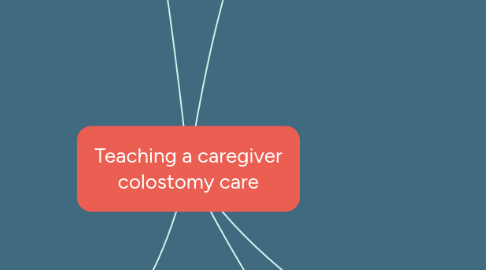
1. Adult Learning Theory
1.1. Theorists
1.1.1. Malcolm Knowles
1.2. View of knowledge
1.2.1. Adults are self-directed and expect to take responsibility for decisions
1.2.2. How and why adults learn
1.3. View of learning
1.3.1. Andragogy
1.3.1.1. Four crucial assumptions about the characteristics of adult learners
1.3.1.1.1. Self-concept
1.3.1.1.2. Experience
1.3.1.1.3. Readiness to learn
1.3.1.1.4. Orientation to learning
1.4. Role of student
1.4.1. Independent
1.4.2. Motivated
1.4.3. Self-sufficient
1.5. Role of educator
1.5.1. Adults need to be involved in their learning experience (planning, evaluation)
1.5.2. Experience should be the basis for learning activities
1.5.3. Adults learn the best from things that are immediately valuable to their needs
1.5.4. Adult learning is problem centered
1.6. How the theory informs
1.6.1. Most caregivers taught are adults. This will guide an educator in forming and providing adult-direct education that is easily understood and accepted by a caregiver.
2. Caring Theory
2.1. Theorists
2.1.1. Dr. Jean Watson
2.2. View of Knowledge
2.2.1. Four major concepts
2.2.1.1. human being
2.2.1.1.1. “a valued person in and of him or herself to be cared for, respected, nurtured, understood and assisted.”
2.2.1.2. health
2.2.1.2.1. Health is defined as a high level of overall physical, mental, and social functioning; a general adaptive-maintenance level of daily functioning; and the absence of illness, or the presence of efforts leading to the absence of illness.
2.2.1.3. environment
2.2.1.3.1. Watson’s definition of environment/society addresses the idea that nurses have existed in every society, and that a caring attitude is transmitted from generation to generation by the culture of the nursing profession as a unique way of coping with its environment.
2.2.1.4. nursing
2.2.1.4.1. “a human science of persons and human health-illness experiences that are mediated by professional, personal, scientific, esthetic and ethical human transactions.”
2.3. View of learning
2.3.1. The learning should take place in a caring environment that '' that offers the development of potential while allowing the patient to choose the best action for him or herself at a given point in time''
2.4. Role of educator
2.4.1. Caring can be effectively demonstrated
2.5. Role of Student
2.5.1. The development of a nurse’s own feeling is needed to interact genuinely and sensitively with patients.
2.5.2. The systematic use of the scientific method for problem-solving and decision-making, which allows for control and prediction, and permits self-correction.
2.6. How the theory informs
2.6.1. This is a foundational concept for the basis of nursing. Caring is key. When teaching a skill such as new ostomy teaching, it is important to approach with a caring nature. Patient's experience body image disturbance with ostomy creation, so incorporating dignity through the four major concepts of this theory is critical.
3. How the theory informs
3.1. This theory is important in particular to learning a new skill. Everyone is an individual and although taught a certain way, may develop an alternate way of performing the same task that is easier for them and still achieve the same outcome. This promotes independence. Also, when teaching a new skill, providing an environment conducive to learning is extremely important in ensuring the skill is received well by the learner.
4. Experiential Learning
4.1. Theorists
4.1.1. Carl Rogers
4.2. View of knowledge
4.2.1. we learn through trial and error
4.3. View of learning
4.3.1. Learning by doing
4.3.1.1. do
4.3.1.2. reflect
4.3.1.2.1. After doing all 3 steps, do again and hope for improvement upon the skill
4.3.1.3. students must be involved and ''do''
4.3.1.3.1. addresses the needs and wants of the learner
4.3.1.4. modify
4.3.2. guiding rather than direct
4.4. Role of student
4.4.1. difficult and challenging situations
4.4.2. freedom
4.4.3. open to change
4.4.4. self evaluation
4.5. Role of educator
4.5.1. facilitate learning
4.5.2. setting a positive environment for learning
4.5.3. defining purpose for the learning
4.5.4. organizing and making resources available
5. Operant Conditioning
5.1. Theorists
5.1.1. B.F. Skinner
5.2. View of knowledge
5.2.1. behavior can be modified through stimuli in the environment
5.3. View of learning
5.3.1. individuals learn best through reinforcement of desired behaviors
5.4. Role of student
5.4.1. must engage to learn instead of observing only
5.5. Role of educator
5.5.1. positive reinforcement
5.5.1.1. present information in small amounts
5.5.1.1.1. secondary reinforces: praise, prizes, good grades
5.5.2. provide immediate feedback
5.6. How the theory informs
5.6.1. To effectively teach a caregiver a skill they have never performed, such as changing an ostomy appliance, reinforcement is key. Realizing it will take more than one teaching encounter for the caregiver to become independent and confident in performing this skill is important. Providing praise and motivation during each teaching episode is crucial.
